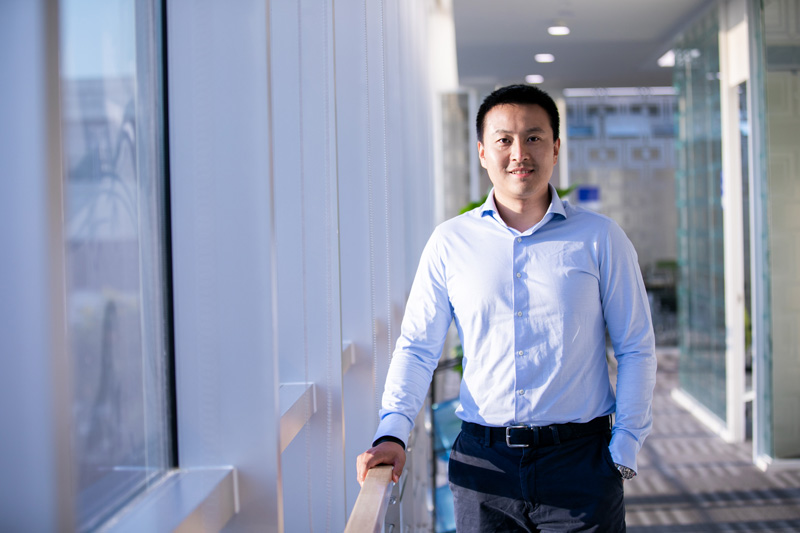A Duke Kunshan professor has conducted research that suggests the SIRT 1 gene could protect against the effects of air pollution, leading to longer, healthier lives.
Further research could lead to a therapeutic intervention aimed at activating the gene’s pollution-fighting qualities in the future for people living in high pollution environments, said John Ji, assistant professor of environmental health science. Doctors may one day begin to “prescribe drugs that counteract the effects of air pollution,” he added.
Previous studies of the SIRT 1 gene have produced a large body of evidence in animal models and molecular biology indicating its part in prolonging lifespan. An expansive volume of research in the field of epidemiology has recognized the relationship between air pollution and premature mortality.
Ji’s research was aimed at bridging the two bodies of findings together to study the interaction of genetic and environmental factors. ‘Scientists who are only interested in genes may not consider environmental factors. However, for complex health endpoints in aging, genetic pre-dispositions and environment both give rise to health. Some longevity genes may be acting through helping the body recover from environmental insults, such as air pollution.’

Professor John Ji’s research has uncovered a link between the SIRT 1 gene and resistance to the ill effects of pollution
The research team used the Chinese Longitudinal Healthy Longevity Study, a cohort of one of the largest samples of centenarians in the world. They calculated air pollution data using ground-based monitors and remote sensing technology. Cross-referencing vast amounts of data from the studies gave him a picture of the impact of pollution on people’s health with and without the SIRT 1 gene across heavily polluted parts of China.
His research found a link between SIRT 1 and resistance to the ill effects of pollution, possibly through anti-inflammatory and anti-oxidative stress pathways.
The research offers a potential avenue for fighting the effects of pollution, which, according to the 2015 Global Burden of Disease Study, is the fifth leading cause of death globally, accounting for 7.6% of the total, and a particular problem for China, where a coal-based energy-intensive development path has led to an estimated 1.6 million deaths from heart and lung diseases or stroke, accounting for one in six premature deaths.
In many developing countries, it is “one of the highest causes of death and is considered a silent risk factor because often the effect of air pollution is unnoticed on an individual level,” said Ji.
“From our findings, we can see that air pollution is not affecting each individual equally. Some are more susceptible, and some are less susceptible to the harmful effects. Surely, many other factors come into play such as co-morbidities of other underlying diseases.”
These scores could help to create a more rounded picture of the impact of genetics on the effects of pollution and potentially lead to personalized and preventative therapies, according to Ji.
Ji expressed a further step in terms of research could be a randomized controlled trial of a clinical intervention that could activate the SIRT 1 gene to protect against pollution. “I am not sure how long this would take, as a successful therapeutic from start to finish is a decade or so. We have lots of work to do,” he added.

